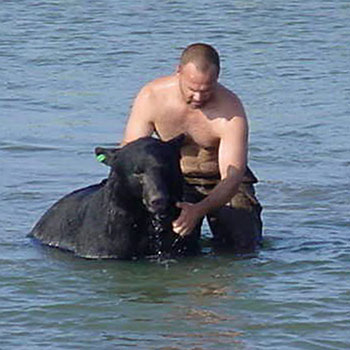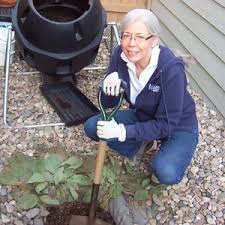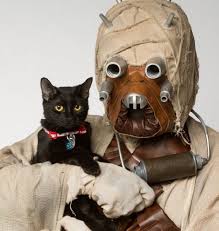"HERO PEOPLE OF THE WEEK" - Our Hero Saved A 400-lb. Drowning Bear - Adam Warwick
 What would drive Adam Warwick to jump in alligator filled waters to save a bear that was drowning? Adam is our special guest this week and he tells an adrenaline filled rescue story. When he's done telling you what he did for this bear, you'll ask yourself if you would've done the same thing.
What would drive Adam Warwick to jump in alligator filled waters to save a bear that was drowning? Adam is our special guest this week and he tells an adrenaline filled rescue story. When he's done telling you what he did for this bear, you'll ask yourself if you would've done the same thing.
Adam Warwick is the Stewardship Manager & Wildlife Biologist at The Nature for The Nature Conservancy based out of North Carolina's Southern Blue Ridge Mountains Office in Asheville.
Years ago, when Adam worked for the Florida Fish & Wildlife Commission, he dealt with many human/bear conflicts. This usually pertained to bears getting in trash or coming on porches to get dog or cat food.
One day he got a call about a bear swimming about a mile off the beach that eventually came on shore. The bear then spent the next two weeks going from house to house to get into trash. Normally, Adam would set a trap in this type of case and then relocate the bear. However, because this bear had been caught before, they decided to "free dart" him. The bear was bent over digging through a trashcan when they "shot" him with the dart. What they thought would be a fairly normal event went horribly wrong.
Usually, a bear goes down in about 10-15 minutes after being darted, but 20 minutes later this 375-pound bear was still up, perhaps because of the adrenaline. The bear then crossed the road and headed towards the bay. The bay itself is about four miles wide.
The bear was going to try and swim to the other side and made it out into the water about knee deep, when he started wobbling. Adam knew the bear couldn't make the 4-mile swim safely across the bay and would probably drown. Adam then ran out to the end of a 20-yard long dock and got in the water. His plan was to try and create some commotion so the bear would turn around and go back to shore.
The bear kept swimming and eventually caught up with Adam. They were then both head-to-head in about 5-foot of water. By this time, the bear was really struggling and jumped up on his hind legs as if he here going to leap up on top of Adam. But then all of a sudden, the bear fell straight backwards into the water.
At that point, the bear was bobbing around and having a lot of trouble swimming. Adam was then able to swim around him and get on his back and grab the scruff of his neck. Adam hung on until the bear was "out of it" enough so he could handle him better and hold his head up so he wouldn't drown, but the bear continued to thrash around. Someone eventually came out with a boat, but that startled the bear even more.
Adam lost track of time, but felt another 5 or so minutes went by, with him hanging on to his back, almost like you would ride a horse, just trying to keep his head above water. The bear eventually stopped thrashing and was about 90-95 percent out of it, so Adam was then able to get up underneath him and pull him to shore.
Adam stated that at this point, he wasn't even thinking, he was just reacting, something he'd always done his whole life, when it came to saving any type of animal.
When you dart an animal, Adam states that you take custody of that animal and are responsible for their wellbeing, whatever it takes.
Thanks to Adam the bear survived and was eventually transported back to his home in Osceola National Forest.
Visit Website
What to Do With The Poo
Rose Seemann, The Pet Poo Pocket Guide
 Rose Seemann is the author of "The Pet Poo Pocket Guide" and our guest. She has some shocking realities about our pet's waste. There's more poo than we think accumulating in landfills and polluting our environment. She'll be using the gold standard of monumental measurement, the football field. And you'll need a lot of them to house all our pet's poo.
Rose Seemann is the author of "The Pet Poo Pocket Guide" and our guest. She has some shocking realities about our pet's waste. There's more poo than we think accumulating in landfills and polluting our environment. She'll be using the gold standard of monumental measurement, the football field. And you'll need a lot of them to house all our pet's poo.
The Pet Poo Pocket Guide came about when Rose Seemann was having lunch at a park, reading a book about recycling. She continually looked up from her book to watch people in the park, who happened to be picking up poop after their pets.
She said it didn't sink in at first, but then she started wondering about how much pet waste there actually was, and started crunching numbers. How much does a dog poop every day? It turns out an average sized dog poops an average of 3/4 of a pound a day. She then started multiplying that by weeks and months and years and came up with a figure that an average sized dog actually excretes 275 pounds a year.
With eighty-three million dogs (and ninety-six million cats) calling the US home, dogs alone produce enough waste to fill more than 1,091 football fields 1 foot deep in a single year. Add billions of plastic pick-up bags to the mix, and season well with tons of litter box waste. Scoop a hefty portion into local landfills and seal it tightly to ensure optimal methane production. Clearly, this is a recipe for disaster.
Unfortunately, about 40-percent of dog waste is left on the ground, which is bad. Not only can you step in it, but it also pollutes. Sixty-percent of the people pick it up, put it in a plastic bag and throw it in the trash, which is the right thing to do. However, the fact that it goes to a landfill means that we are filling up landfills with an organic waste that excretes a lot of methane. This not only takes up space, but it costs money to transport it to the landfill. Everyone also admits that landfill are eventually going to fail.
 Dog and cat owners who trash their pets' offerings daily are in denial about how much waste is produced and what happens to it. Those who want to make the responsible choice often turn to the Internet, only to find misleading, confusing, and contradictory information. The Pet Poo Pocket Guide will help you reduce your pet's environmental paw print with:
Dog and cat owners who trash their pets' offerings daily are in denial about how much waste is produced and what happens to it. Those who want to make the responsible choice often turn to the Internet, only to find misleading, confusing, and contradictory information. The Pet Poo Pocket Guide will help you reduce your pet's environmental paw print with:
- Best practices for cycling pet waste back to nature
- Suggestions on how to tailor your approach based on location, situation, weather, needs or available time
- Instructions for using your composted pet waste safely to enrich your soil and nourish ornamental plants.
Rose Seemann is the owner and operator of EnviroWagg, a company dedicated to collecting and composting canine waste into safe, nutrient-rich garden soil. She established the company after her extensive investigations into the issue of pet waste disposal in North America uncovered an astounding labyrinth of denial, stonewalling and deception. Rose's goal is to educate and guide pet owners in the safe and responsible composting and upcycling of their dogs' and cats' waste - in doing so she hopes to nudge the world toward a more sustainable future.
Visit Website
Customize Your Dog's Treats
Bri Bradley, Smart Cookie Treats
 Bri Bradley is co-owner of a dog treat business. What makes her business so different than the hundreds of other dog treats? She customizes the treats for your dog. You tell her what flavors, carbs, proteins and vegetables to put in and she'll bake them and deliver them right to your door.
Bri Bradley is co-owner of a dog treat business. What makes her business so different than the hundreds of other dog treats? She customizes the treats for your dog. You tell her what flavors, carbs, proteins and vegetables to put in and she'll bake them and deliver them right to your door.
Bri Bradley and her husband wanted to come up with an idea to start their own business, but didn't know what to do. However, being huge pet lovers, they came up with the idea of everyone eating healthier after making special treats for their own dog who became ill, who needed a special diet, and after Bri got sick as well.
They gave out the special treats to friends who commented that while their dogs liked them, they were particular and had a certain preference for things like chicken or beef.
Bri then thought that you can customize everything from shoes to cell phone covers, why not customized personalized nutritional dog treats for your dog's lifestyle or dietary restrictions!
Everyone at Animal Radio thought this was a great idea and had to try it. So we designed a treat specially made for Ladybug, the Animal Radio Stunt Dog. We selected chicken, quinoa and cranberries and carrots. When we received the treats, Hal Abrams had to try them, as he tries all food before we give anything to the Animal Radio studio animals. He said they tasted like "dog treats," but finicky Ladybug thinks they are fantastic!
This is a great way to get treats made specially for your pet without all the time and mess. To get started and make your dog a special treat, all you have to do is to choose your protein, carb and fruits and vegetables. They are then made to order and shipped to your home. What are you waiting for!
Visit Website
Pheromones In Puppy Training - Dr. Debbie

So you just got a new puppy and you have all your training tools at the ready, the collar, leash and dog crate. But beyond that, do you have the one thing that can make your training tasks easier all around? Tap into your puppy's own sense of smell using canine pheromones and ease your new pup's training and transition into the home.
Pheromones are scent signals emitted by all animal species, including humans. Various pheromones work under the radar to influence the perceptions and behaviors of others within a species.
Shortly after whelping, a pheromone is emitted from the bitch's sebaceous (oil) glands located between the mammary glands. The pheromone, dubbed the canine appeasing pheromone, reassures the puppies, calms them and facilitates nursing. The bitch stops emitting this pheromone as the pups mature, but all dogs retain the ability to "read" this pheromone. Not only do older dogs recognize this pheromone, but it continues to have a natural calming effect on canines of all ages.
In veterinary behavior cases, the dog appeasing pheromone is used for dogs with noise phobias, car travel anxiety, separation anxiety and other fearful situations. Various forms are available including pheromone collars, plug in diffusers and sprays. The canine appeasing pheromone doesn't sedate the dog; rather it decreases fear and excitability.
The dog appeasing pheromone is also helpful for newly adopted puppies. Those first few days to weeks in a new home are full of changes for the pup faced with novel environments far from the comfort of mother and siblings. The dog appeasing pheromone has been shown to ease the transition of the pup into new home and improve sociability and training during a pup's critical socialization period.
Pheromone Research
For skeptics that need to see the proof in the studies, veterinary behavior studies have examined the positive influence of the dog appeasing pheromone. When comparing treatment responses for dogs with separation anxiety, the use of the dog appeasing pheromone equaled the benefit of the anti-anxiety medication, amitriptyline.
One study looked at 66 puppies as they settled into new homes after adoption. Approximately half of the puppies wore a pheromone collar and half wore a placebo. The study found that puppies wearing a pheromone collar displayed significantly fewer nuisance behaviors like vocalizations or scratching within 3 days of adoption. Pups wearing the pheromone collar woke their owner's less during the night and displayed fewer signs of distress and vocalizations throughout the course of the study.
The researchers concluded that pheromone collars helped both the pup and family. Pups were less stressed and adapted easier. By decreasing the pup's stress and fearful behaviors, the pet owners found a more enjoyable bonding experience with the new pup and faced less frustration through the training process.
 In another study, puppies 8 to 15 weeks were enrolled in an eight-week long puppy socialization and training class. Half wore a pheromone collar and the other half wore a placebo collar. The pups wearing the pheromone collar were calmer in the face of novel experiences and displayed less fear, anxiety, and aggression. In the end, the pups with the pheromone collar not only were less nervous, but had fewer behavioral problems and learned better. And a long-term effect on sociability was recognized in dogs up to one year after the class and study was completed.
In another study, puppies 8 to 15 weeks were enrolled in an eight-week long puppy socialization and training class. Half wore a pheromone collar and the other half wore a placebo collar. The pups wearing the pheromone collar were calmer in the face of novel experiences and displayed less fear, anxiety, and aggression. In the end, the pups with the pheromone collar not only were less nervous, but had fewer behavioral problems and learned better. And a long-term effect on sociability was recognized in dogs up to one year after the class and study was completed.
Pheromones and My Pup
As a previous owner of a nine-week old Bouvier puppy named Nikki, I used both the pheromone collar and diffuser upon welcoming my new pup home. One day before bringing Nikki home, I placed a pheromone diffuser close to the puppy crate, where it would have maximum benefit during her first nights in the kennel away from mother and siblings. Immediately upon leaving the breeder's home, Nikki was fitted with a pheromone collar to serve as a source of reassuring pheromones that went everywhere she did. The pheromone collar became a tool in Nikki's socialization. It was on her when she met new people or animals, when she explored new environments and during puppy kindergarten class.
Did pheromones help in my pup's transition and training? The four hour drive home from the breeders was a dream, no crying or whining the entire trip. After returning home, Nikki never soiled in her kennel during the day or night. I'll admit I had my share of interrupted sleep in the first two weeks, but most of Nikki's night time wakes were for genuine elimination needs. Overall, her transition into the home was smooth and lacked the wailing, inconsolable cries of a stressed pup.
The canine appeasing pheromone isn't a magic bullet though. Nothing matches a quality pup obtained from a reputable breeder who focuses on health, genetics and early socialization. Likewise, pheromones do not replace the hard work and consistent training efforts that any new pet owner must provide. However, by adding the the canine appeasing pheromone to your new puppy training, you can help your pup become the best he or she possibly can.
Featured veterinarian known as "Dr. Debbie" on national pet radio program, Animal Radio. Ebook author of "Yorkshire Terriers: How to Be Your Dog's Best Friend"; "Pugs: How to Be Your Dog's Best Friend"; "Mini Schnauzers: How to Be Your Dog's Best Friend"; and "Shih Tzu: How to Be Your Dog's Best Friend." Dr. Debbie's books.
Visit Website
 Animal Radio News - Tammy Trujillo
Animal Radio News - Tammy Trujillo
Don't Buy Treats Made In Asia
Teething rings and jerky treats may be responsible for the deaths of more than a thousand dogs. The dogs showed signs of kidney failure within just hours of eating the treats. The labeling is confusing, they say the treats are packaged in Phoenix, but they are MADE in China and Thailand. A lot of pet guardians are now checking labels trying to make sure they know what they are giving their pets, but manufacturers do not have to list the country of origin for each of the ingredients used in their products. Many stores pulled products made in China after the FDA confirmed they were dangerous. The FDA says it wants to hear from any pet guardian about any illnesses through its Safety Reporting Portal. Some vets are saying just don't buy any treats or food that lists Asia on the label in any fashion.
 Otterbox Doesn't Deter Otters
Otterbox Doesn't Deter Otters
Otterbox cellphone cases are notoriously difficult to open, though apparently not for their namesakes. A visitor at the Red River Zoo in Fargo, North Dakota, dropped his Otterbox-protected iPhone into the otter exhibit while trying to grab a photo of the cute little animals. One otter decided to show how clever he was, quickly tearing the case apart and throwing the phone in the water. The otter then kept retrieving the phone to chew on it and then throwing it back in the water, then retrieving it so he could do it all over again.
 May The Force Be With You And Your Pets
May The Force Be With You And Your Pets
We love it when shelters get creative to help homeless pets find homes. The Ottawa Humane Society went to a galaxy far, far away for help, when it teamed up with their local 501st legion, a volunteer group that makes appearances as villainous Imperial Star Wars characters. The 501st's motto: "Bad guys doing good." Rohit Saxena is a photographer who had been volunteering at the shelter. He said the group started doing themed photo-shoots to help animals find homes. They started with a Game of Thrones session then moved on to the Star Wars' iconic anonymous villains. Turns out the bad guys aren't that bad. The Storm Troopers posed with cats, dogs, bunnies and guinea pigs. I guess the shelter didn't have any Ewoks up for adoption.
Who Would You Trust With Your Innermost Feelings: Your Siblings Or Your Pets?
A study done at Britain's Cambridge University followed 100 families over the course of 10-years. It found that not enough attention is paid to the significant role pets play in a child's life. The research showed that children facing emotional difficulties, such as "bereavement, divorce, instability and illness" placed a particular importance on their pets. They turned to their pets for support much more often than they turned to their brothers and sisters. That's even true when they knew that their pets actually don't understand what they are saying. The research also suggested that kids are likely to have stronger relationships with their pets than their peers. One of the keys to the relationships, the children said they know their pets won't judge them.
 Dog Left At Railroad Station Becomes "Spokes-Dog"
Dog Left At Railroad Station Becomes "Spokes-Dog"
Remember the story about a dog, named Kai, in Scotland who was tied to a rail at a railway station with a suitcase full of its belongings? He got a new home and job after Ian Russell adopted the Shar-pei mix. The Scottish SPCA chose him from a list of hundreds of people who wanted to give Kai a home. Ian felt like it was no accident he was selected to become Kai's new guardian. He felt Kai was sent to help him get through a difficult time after his Dalmatian Mica passed. Ian became involved with the charity, helping promote adopting homeless pets and Kai's became the spokes-dog for the cause. Kai's story got so much publicity that Ian said he was recognized everywhere they went and that they were always getting stopped on the street and asked for photos. He said Kai loves everyone and even got along with all the other dogs they met.
 Listen to the entire Podcast of this show (#1269)
Listen to the entire Podcast of this show (#1269)





